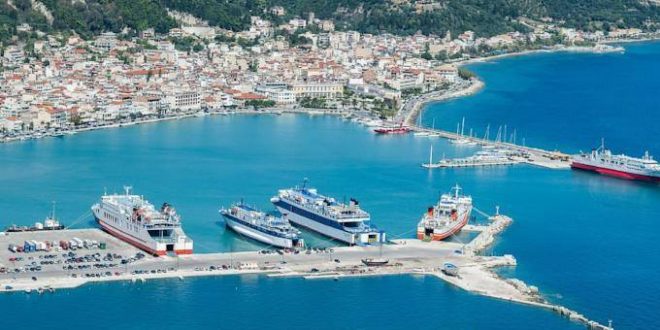It wasn’t long ago when we were visited by the ELSTAT employees, giving them details for a new census which was in progress. The date of that research has now been released.
•20,217 men and 20,291 women
• The population of Greece is 10,432,481
The population of Greece is estimated at 10,432,481, according to the results of the “Population Census – Housing 2021”, the first digital census conducted by the Hellenic Statistical Authority (ELSTAT) and which were released yesterday.
ELSTAT’s figures state that during the 2011 census, the permanent population amounted to 10,816,286, thus resulting in a decrease of approximately 383,805 or by 3.5%.
Women amount to 5,357,232 – and make up 51.3% of the population, while men are 5,075,249. The population of Attica is estimated at 3,792,469 and is reduced by 35,965 inhabitants compared to 2011. Central Macedonia follows, with 1,792,069 inhabitants, with the decrease estimated at 90,039 inhabitants compared to 2011. In last place is the Northern Aegean region with 194,136 inhabitants.
Out of the 13 Regions of the country, 12 saw a decrease in population, while in one, in the South Aegean, there was an increase. In the South Aegean, from 309,000 inhabitants, 324,000 inhabitants were now recorded.

In Zakynthos
The population of Zakynthos amounts to 40,508. While 20,217 are men and 20,291 are women. Compared to 2011, the population has decreased by 0.6%.
The total population of the Ionian Islands is 200,726 and compared to 2011 a decrease of 3.4% is recorded.
It is worth noting, however (as can be seen in the relevant tables) that Zakynthos has the smallest reduction rate in the Ionian.
According to the information we received from the Head of the Regional Service of Zakynthos, Sotiris Thalassinos, at a later time the results will also be announced at the Community level.
The census
From the Census of Population – Housing, updated data emerges regarding:
• the Permanent Population, i.e. the residents who reside permanently in each Region, Regional Unit, Municipality, Municipal Unit, Community and autonomous settlement, regardless of citizenship and residence status,
• the Legal Population, i.e. the citizens of each Municipality and Municipal Unit, on the basis of which the distribution of parliamentary seats in the individual constituencies is made, during the parliamentary elections (Article 54 of the Constitution),
• the number of dwellings, by type (normal or irregular dwellings), and the data regarding their main characteristics and amenities,
• the number and composition of households,
• the demographic, social, educational and economic characteristics of the Permanent population of the Country,
• data on inbound and outbound migration. Within the scope of the purpose of the 2021 General Censuses, the compilation of Statistical Registers of Buildings and Population was also included, in accordance with the new European methodological framework, which provides for the transmission of census demographic data on an annual basis.
Processing of data
According to the planning of the 2021 Population – Housing Census, the responsibilities of the Enumerators were the registration in the ELSTAT secure database of the data of the questionnaires collected, through an interview, during the 2nd Phase. In this way and the electronic self-enumeration, all the data of the Census had been integrated into the ELSTAT database in a short period of time (a few days) after the end of the data collection and were ready for processing.
The Census electronic questionnaire had built-in automatic checks aimed at ensuring the collection of more complete and accurate data. An important innovation of the Population – Housing Census 2021 was the development and implementation of an electronic system for managing and monitoring the tasks. All work was managed electronically. Therefore, for the first time, it was possible in real-time (real-time) during the data collection phase, to monitor the collection process, as well as to check the completeness and correctness of the collected data, according to the level of competence, with the aim of dealing with non-response, or incorrect responses etc. This allowed immediate action to be taken to resolve any issue that arose. After the end of the Census and in order to extract the provisional results in the data of the Census database quality and completeness checks were carried out.
More specifically, in the first phase, with the “data cleaning” process, a check was carried out for cases of duplicate registrations, registrations or missing variables, such as for example gender, checking the identification of persons registered as temporarily hosted, encoding the geographical code of their place of permanent residence and transfer them to their permanent residence.
In addition, quality checks were carried out regarding the full coverage of the total population, using data from administrative sources. Data from administrative sources were used as a means of quality control and/or filling in missing values of key demographic characteristics of the population, such as place of permanent residence, sex, age, missing records, etc.
The collection through the Census of the TIN (TAX No) and AMKA of the enumerated persons served as a “key” for the interconnection of the Census data with the data of administrative registers. In this context, administrative data from the country’s tax authority (Independent Public Revenue Authority – AADE) and Social Security were used in the first stage.
During the quality control of the provisional data, data from the Natural Population Movement (FPM), administrative data from the student population, as well as from the labor force survey were taken into account only in terms of the change in the employment of foreigners.
As part of the audits for the extraction of the final results, further audits (logical and completeness) are underway, as well as qualitative ones using data from additional administrative sources, such as the Ministry of Labor and Social Affairs for special population groups, the Electricity Distribution Network Operator SA (DEDDIE SA) and the Civil Registry under creation.
To get up-to-date news or more information about Zakynthos, join our Facebook group or follow our Twitterfeed. All articles on this blog are the property of the authors and The Zakynthos Informer. No articles are to be reproduced, copied or screenshot without the permission of the author.
source in Greek https://www.imerazante.gr/
 Zakynthos Informer Zakynthos Informer
Zakynthos Informer Zakynthos Informer





